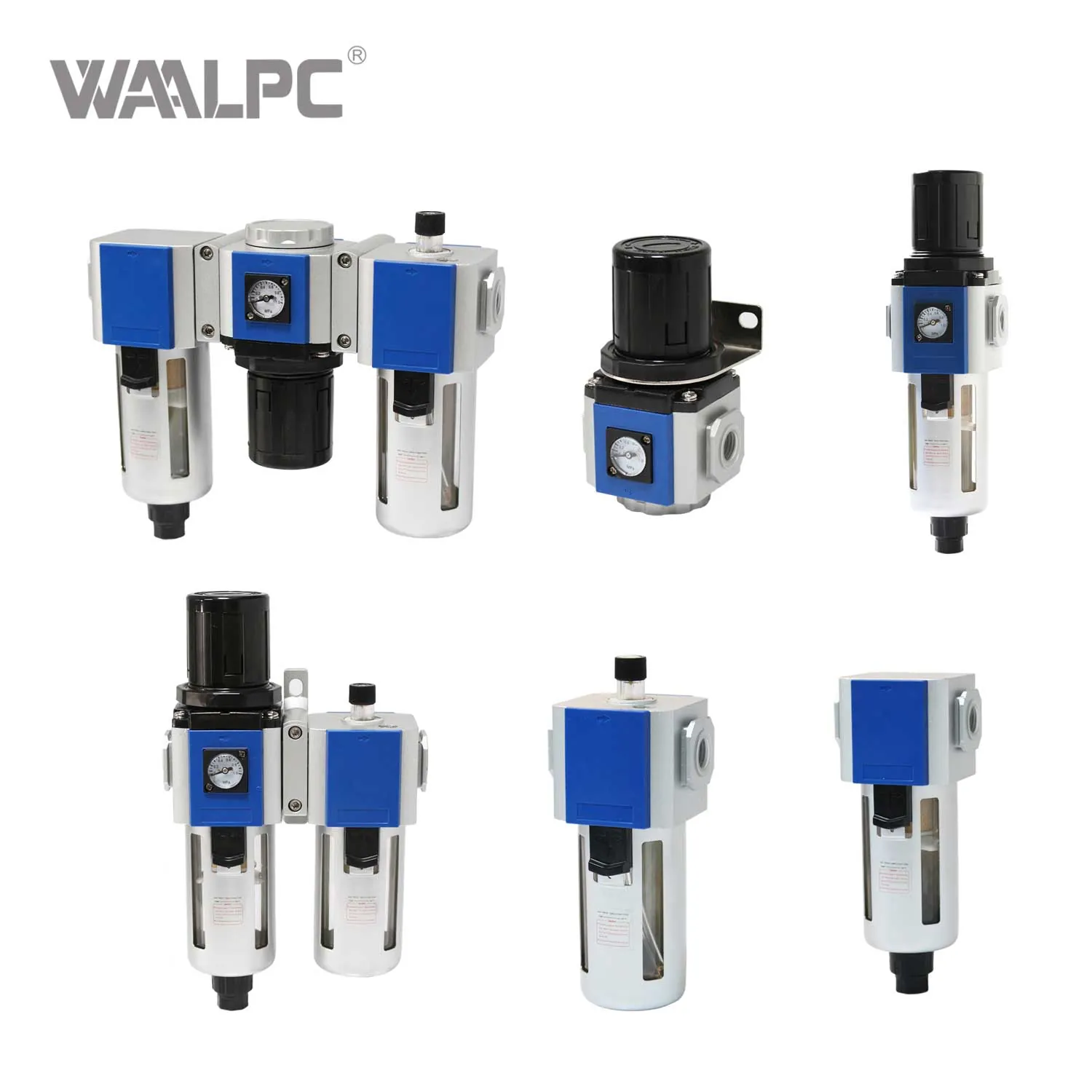Views: 0 Author: Site Editor Publish Time: 2025-05-25 Origin: Site

Combination and configuration analysis of air source treatment parts and air compressors
I. Functions and necessity of combination of core components .
Air compressor: compresses air and increases pressure to provide power source for pneumatic system.Air source treatment parts: purify compressed air, remove moisture, oil, particulate matter, stabilize pressure, and protect downstream equipment.
Purpose of combination: prevent impurities from damaging pneumatic components, reduce maintenance costs, and improve system stability and life.
II. Typical configuration process Aftercooler Location: Immediately connected to the outlet of the air compressor.Function: Reduce the temperature of compressed air (usually below 40°C), promote condensation of water vapor, and facilitate subsequent processing.
1. Air storage tank Location: After the aftercooler.Function: Buffer pressure fluctuations, store compressed air, and promote condensed water deposition (regular drainage is required).
2. Filter Primary filter: Remove large particle impurities (>1μm) and liquid oil and water.Precision filter: Further remove microparticles (up to 0.01μm) and oil mist.Recommended order: coarse filtration first, then fine filtration to protect subsequent equipment.
3. Dryer Type selection: Refrigerated dryer: pressure dew point 3~10℃, suitable for general industrial applications.Adsorption dryer: pressure dew point -20~-70℃, suitable for high drying requirements (such as precision instruments).Location: After the filter to prevent particulate matter from clogging the dryer.
4. Pressure regulating valve Location: downstream of the dryer, close to the gas-using equipment.Function: stabilize the output pressure to avoid pressure fluctuations affecting equipment performance.
5. Oil mist collector (optional) Location: after the pressure regulating valve, before the actuator to be lubricated.Note: only for oil-lubricated systems, no configuration is required for oil-free systems.
III. Key design considerations
1. Air compressor type adaptation Oil-lubricated air compressor: oil removal filter and high-efficiency dryer are required.Oil-free air compressor: oil treatment can be reduced, but water and dust removal are still required.
2. Air quality standard (ISO 8573) Select the treatment level according to the application scenario (such as Class 0 oil-free air is required for the medical industry).
3. Match the filter accuracy and dryer dew point.
4. System layout optimization
5. Pressure loss: Select low-resistance components to reduce pressure drop (such as large-diameter filters).
6. Air tank location: Placing it in front of the dryer can buffer the load, but drainage needs to be strengthened; placing it after the dryer requires a larger drying capacity.
7. Maintenance and safety
8. Configure automatic drain valves and differential pressure indicators, and replace filter elements regularly.
9. Install a safety valve on the air tank, and set up a pressure gauge monitoring system.
IV. Application scenario examples
General manufacturing industry: air compressor → aftercooler → air tank → primary filter → refrigerated dryer → pressure regulating valve.
Food/pharmaceutical industry: air compressor → aftercooler → air tank → multi-stage filter (including activated carbon) → adsorption dryer → sterile filter.
High-precision equipment: Add adsorption dryer + micro oil mist filter to ensure dew point <-40℃.
V. Summary
The quality of compressed air can be significantly improved, equipment life can be extended, and energy consumption can be reduced by properly configuring air source treatment components and air compressors. Cost, space, maintenance convenience and industry standards should be considered comprehensively during design, and the order and type of components should be flexibly adjusted to achieve optimal system performance.